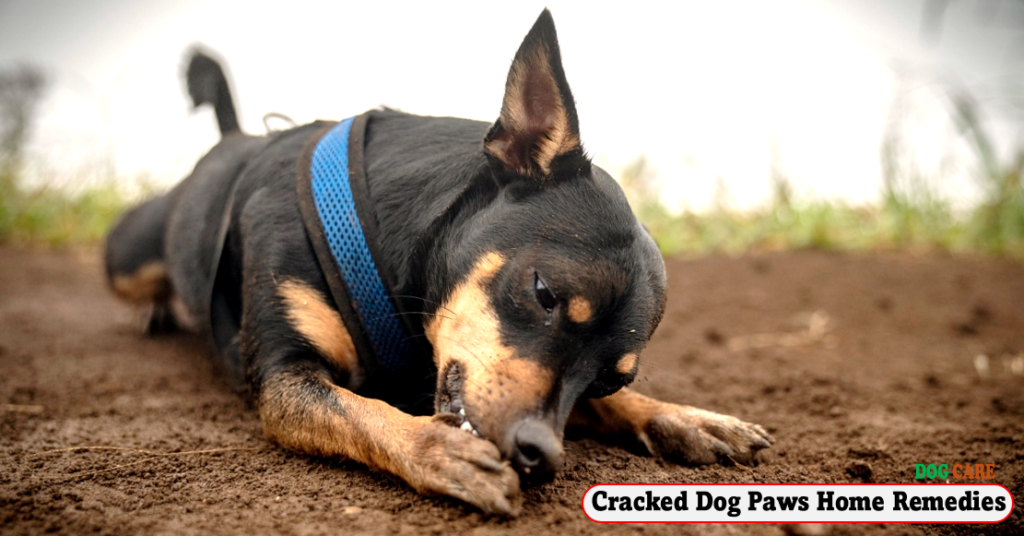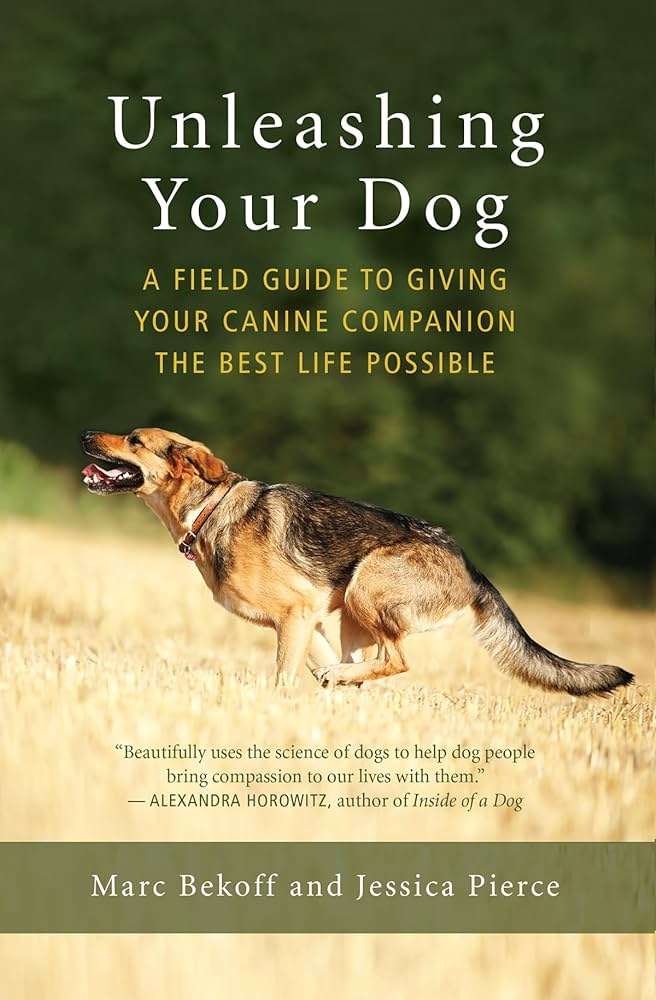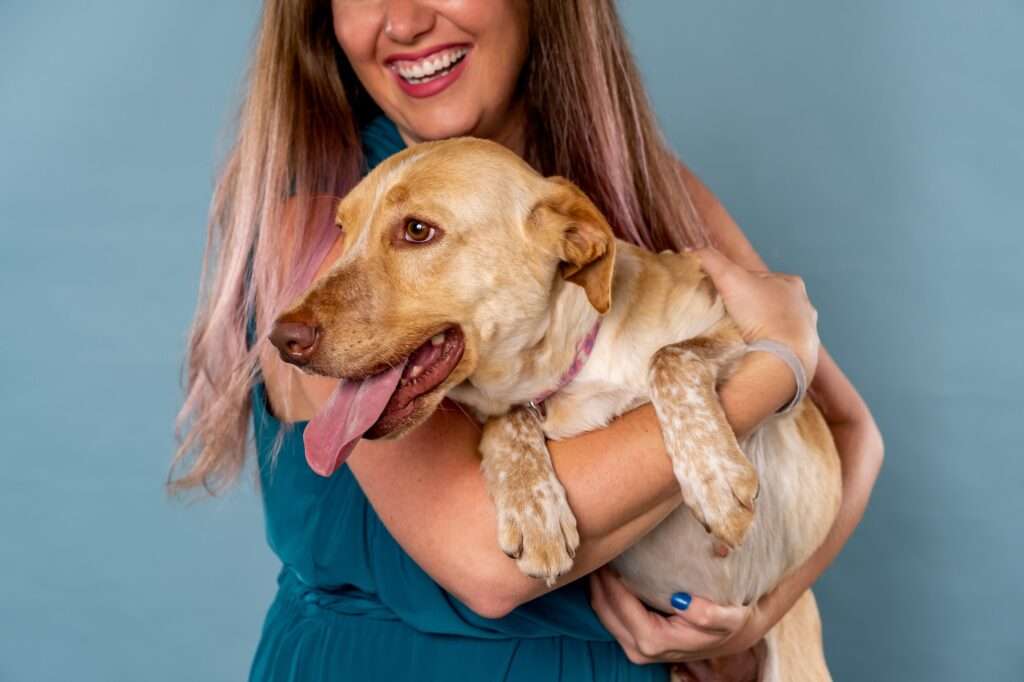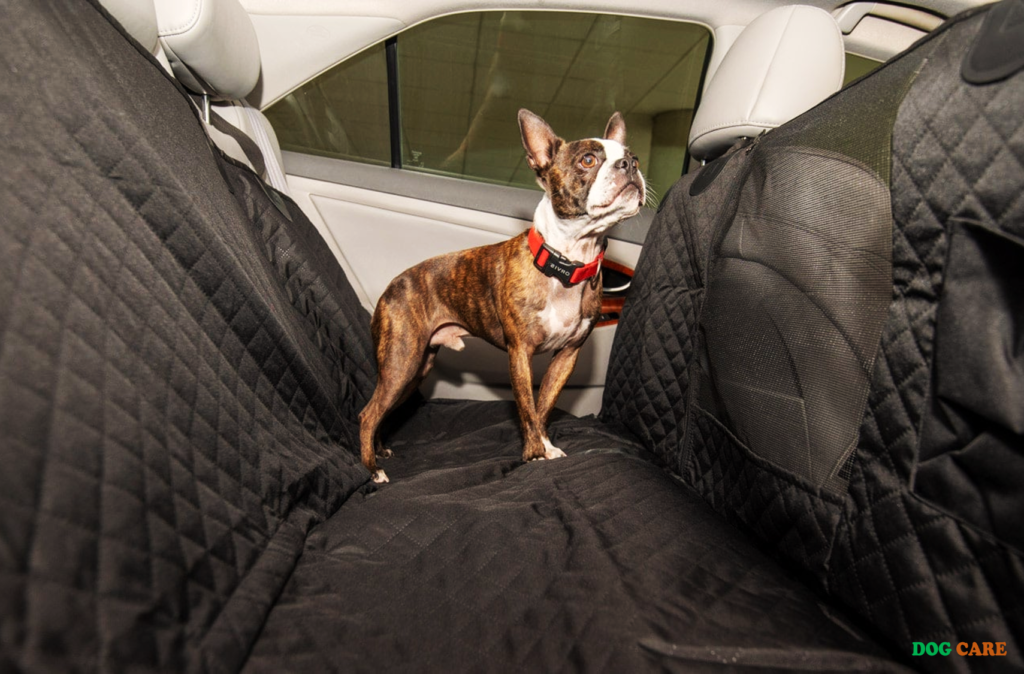Cracked Dog Paws Home Remedies can be treated at home using remedies such as moisturizing balms and foot soaks. Are your dog’s paws cracked and dry?
Do they seem uncomfortable or irritated when walking? If so, you’re not alone. Cracked dog paws are a common issue that many pet owners face. However, you don’t necessarily need to rush to the vet every time you notice this problem.
There are a variety of home remedies that can help alleviate discomfort and promote healing. From moisturizing balms to foot soaks, these simple remedies can make a big difference in your dog’s paw health. We will explore some effective home remedies for cracked dog paws that can help your furry friend feel better in no time.

Causes Of Cracked Dog Paws
Cracked dog paws can be a common issue that many pet owners face. Not only can it cause discomfort and pain for your furry companion, but it can also lead to more serious complications if left untreated. Understanding the causes of cracked dog paws is essential in finding effective remedies and preventing future occurrences. In this section, we will explore three common causes of cracked dog paws: dry and cold weather, excessive exercise or rough surfaces, and allergies or skin conditions.
Dry And Cold Weather
Dry and cold weather is one of the leading causes of cracked dog paws. Just like humans, dogs’ paws can become dry and cracked due to the lack of moisture in the air. When the weather is cold, the air tends to be drier, causing the paw pads to lose their natural oils and moisture. Additionally, walking your dog on icy or snowy surfaces can further contribute to dryness and cracking.
Preventive measures:
- Moisturize your dog’s paws regularly with a pet-friendly paw balm or coconut oil to keep them hydrated.
- Avoid walking your dog on excessively cold or icy surfaces. Opt for protected areas or consider using dog booties to provide extra insulation and protection.
Excessive Exercise Or Rough Surfaces
Another common cause of cracked dog paws is excessive exercise or walking on rough surfaces. When dogs engage in intense physical activity or walk on abrasive surfaces such as concrete or gravel, the constant friction can lead to cracks and injuries on their paw pads.
Preventive measures:
- Gradually build up your dog’s exercise routine to allow their paws to adjust to the increased physical stress.
- Avoid walking your dog on rough or rocky surfaces whenever possible. Opt for grassy areas or use dog booties for added protection.
Allergies Or Skin Conditions
Allergies or skin conditions can also contribute to cracked dog paws. Just like humans, dogs can experience allergic reactions to certain substances or environmental factors. These allergies can cause inflammation and dryness, leading to cracks in the paw pads. Additionally, certain skin conditions such as dermatitis or fungal infections can also contribute to paw pad issues.
Preventive measures:
- Keep your dog away from known allergens or substances that trigger allergic reactions.
- Consult with your veterinarian to identify and treat any underlying skin conditions that may be contributing to paw pad problems.
By understanding the causes of cracked dog paws, you can take proactive measures to prevent and manage this common issue. Whether it’s protecting your dog’s paws from harsh weather conditions, providing proper exercise, or addressing underlying allergies, being mindful of these factors will help keep your furry friend’s paws happy and healthy.
Home Remedies For Cracked Dog Paws
Cracked dog paws can be painful and uncomfortable for our furry friends. Fortunately, there are several home remedies that can help soothe and heal their paws. From moisturizing paw balms and creams to protective paw boots or socks, these remedies offer natural and effective ways to treat cracked dog paws. In this article, we will explore some of the best home remedies that you can try to keep your dog’s paws healthy and happy.
Maintain Healthy Paws With Moisturizing Paw Balms And Creams
Moisturizing paw balms and creams are specifically designed to nourish and hydrate your dog’s dry and cracked paws. These products are usually made with natural ingredients that help soothe irritation and promote healing. Simply apply a thin layer of the balm or cream onto your dog’s paw pads and massage it in gently. This will help moisturize the skin, reduce cracking, and provide a protective barrier against further damage from harsh surfaces. Look for products that contain ingredients like shea butter, coconut oil, or beeswax, as they have excellent moisturizing properties.
Protective Paw Boots Or Socks
If your dog spends a lot of time outdoors or walks on rough terrain, protective paw boots or socks can be a great solution for preventing and treating cracked paws. These boots or socks act as a barrier between your dog’s paws and the ground, protecting them from extreme temperatures, sharp objects, and chemicals. They also provide extra cushioning and support to reduce pressure on the paw pads. Make sure to choose boots or socks that fit properly and are comfortable for your dog to wear. With regular use, they can significantly improve the condition of your dog’s paws.
Epsom Salt Soaks
Epsom salt soaks can provide relief for cracked dog paws and help to promote healing. The magnesium sulfate in Epsom salt has anti-inflammatory properties and can help reduce swelling and soothe irritated skin. To create an Epsom salt soak, dissolve a tablespoon of Epsom salt in a gallon of warm water and mix well. Then, soak your dog’s paws in the mixture for about 10 minutes. Pat the paws dry gently afterward. Repeat this treatment a few times a week to keep your dog’s paws healthy and moisturized.
Natural Oils And Balms
Natural oils and balms, such as olive oil or coconut oil, can provide excellent moisturizing and healing benefits for cracked dog paws. These oils are rich in nutrients and have antibacterial and antifungal properties, which can help prevent infections. Before applying the oil or balm, make sure to clean your dog’s paws thoroughly to remove any dirt or debris. Then, gently massage a small amount of oil or balm onto the paw pads. This will help moisturize the skin and create a protective barrier. Regular use can help soften the paws and prevent further cracking.
Regular Paw Maintenance Routine
Making paw maintenance a part of your regular routine is crucial in keeping your dog’s paws healthy and preventing cracking. This includes regular nail trimming to ensure the nails do not grow too long and cause discomfort while walking. Additionally, removing any debris or foreign objects that may get stuck between the paw pads will help prevent irritation and infection. Use a soft cloth or pet-friendly wipes to clean and inspect your dog’s paws regularly. This will allow you to catch any issues early on and take appropriate action.
Preventing Cracked Dog Paws
Regular maintenance and care can go a long way in preventing cracked dog paws. By paying attention to your furry friend’s paws and implementing a few simple strategies, you can keep their paws healthy and protected. In this section, we will explore three key methods to prevent cracked dog paws: regular paw inspections, proper hydration and nutrition, and limiting exposure to harsh environments.
Regular Paw Inspections
Regularly examining your dog’s paws is an essential part of preventing cracking and discomfort. By inspecting their paws, you can identify any signs of trouble early on and take the necessary actions. Here are a few steps to follow during a paw inspection:
- Find a quiet and comfortable space where your dog feels at ease.
- Gently hold one paw in your hand and examine the pads, nails, and the spaces between the toes.
- Look out for any redness, swelling, cuts, cracks, or foreign objects such as thorns or splinters.
- If you notice anything unusual, clean the affected area with a mild antiseptic and consult your veterinarian for further advice.
Regular paw inspections allow you to catch potential issues before they worsen, enabling prompt treatment and preventing future cracked dog paws.
Proper Hydration And Nutrition
Adequate hydration and a balanced diet are vital for keeping your dog’s paws healthy and moisturized from within. Here are a few tips to ensure your furry companion receives the hydration and nutrition they need:
- Always provide your dog with fresh, clean water and ensure they have access to it throughout the day.
- Consult your veterinarian to determine the appropriate diet for your dog’s age, breed, and specific needs.
- Include high-quality dog food that contains essential nutrients like omega-3 fatty acids, vitamins, and minerals, which promote overall skin and paw health.
- Consider incorporating occasional hydration boosters, such as bone broth or wet food, to support your dog’s skin and paw moisture.
By ensuring your dog stays properly hydrated and receives adequate nutrition, you can strengthen their paws and reduce the likelihood of cracks and dryness.
Limiting Exposure To Harsh Environments
Exposure to harsh environments can take a toll on your dog’s paws, leading to cracked and painful pads. Minimizing their exposure to such conditions is essential for paw health. Here are some strategies to protect your dog’s paws in harsh environments:
| Tip | Description |
|---|---|
| Avoid Hot Pavements | Avoid walking your dog on hot pavements during scorching summer days, as it can cause burns and discomfort. |
| Moisturizing Paw Balms | Apply moisturizing paw balms before outdoor activities in cold and dry weather to provide a protective barrier against environmental elements. |
| Protective Footwear | In extreme conditions, consider using paw booties or socks to shield your dog’s paws from excessive heat, cold, or rough terrain. |
By being mindful of the environments your dog frequents and taking appropriate precautions, you can safeguard their paws from cracking and discomfort.
When To Seek Veterinary Care
While cracked dog paws can often be treated at home with suitable remedies, there are certain circumstances where it is important to seek veterinary care. This ensures that your furry companion receives the necessary professional attention to prevent further complications and ensure their optimal health and well-being. If you notice any of the following signs, it is recommended to consult a veterinarian without delay.
Persistent Or Severe Cracking
Although minor cracks in your dog’s paws can be treated with home remedies, persistent or severe cracking may indicate underlying issues that require veterinary intervention. If your dog’s paws continue to crack or if the cracks worsen despite using appropriate remedies, it is essential to seek professional advice. These persistent or severe cracks may be a sign of an underlying medical condition affecting your dog’s paw health.
Visible Signs Of Infection
It is crucial to closely monitor your dog’s paws for any signs of infection. If you observe redness, swelling, discharge, pus, or a foul odor coming from the cracked paws, it may indicate an infection. In such cases, seeking veterinary care is crucial as infections can quickly worsen and spread. A veterinarian will be able to diagnose the infection accurately and prescribe appropriate medications, such as antibiotics, to treat the infection effectively.
Unusual Behavior Or Limping
Pay close attention to your dog’s behavior and movement. If you notice unusual behavior, such as excessive licking or chewing of the cracked paws, or if your dog starts limping, it is a sign that the discomfort or pain has reached a level where professional care is essential. These signs may indicate that the paw cracks have become more serious or are causing significant discomfort to your dog. A veterinarian can properly assess the condition, determine the cause of the behavior or limping, and recommend suitable treatment options.
Remember, as a responsible pet owner, it is important to prioritize your dog’s health and well-being. By seeking veterinary care when warranted, you can ensure that your furry friend receives the necessary attention and treatment to address any paw-related issues effectively.
Frequently Asked Questions For Cracked Dog Paws Home Remedies
What Is Safe For Dogs Cracked Paws?
Applying natural balms or paw protectors can help soothe and heal cracked paws in dogs. These products are safe and provide moisturization and protection from further damage.
Can I Put Vaseline On My Dog’s Cracked Paws?
Yes, you can apply Vaseline to your dog’s cracked paws. It helps moisturize and soothe their dry skin.
What Do You Moisturize Dogs Paws With?
Moisturize dogs’ paws with pet-friendly paw balms or oils. Avoid products with artificial fragrances or chemicals.
Will A Dog’s Cracked Paw Heal On Its Own?
Yes, a dog’s cracked paw can heal on its own if it’s a small crack. However, if the crack is deep or causing pain, it’s best to consult a veterinarian for proper treatment and to prevent any infections.
Conclusion
Taking care of your dog’s cracked paws is crucial for their overall health and well-being. By implementing these home remedies, such as moisturizing, protecting from harsh surfaces, and providing a balanced diet, you can help alleviate discomfort and prevent further damage.
Remember to consult with a veterinarian for severe cases or persistent issues. Your furry friend will thank you for the extra care and attention you give to their paws!



